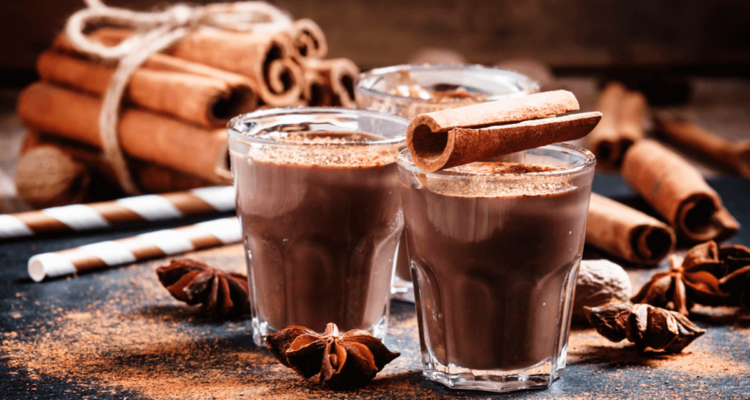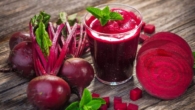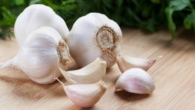
What are the benefits and harms of cocoa, does it cause acne and can children drink it
0
Some people like to start the day with a cup of cocoa and believe that it is wonderfully invigorating, uplifting, and contains as much caffeine as coffee. There are also those who believe that it is the most useful drink for children. And someone, on the contrary, tries to avoid cocoa and products containing it, fearing to be covered with acne. Finally, many myths surround its taste and cooking methods. We tell the truth.
Truth and myths about cocoa beans, oil, cocoa powder and the drink itself
The tastiest cocoa comes from the powder
In fact, the tastiest drink is from grated cocoa, which is obtained directly from their cocoa beans. In this case, it is not even necessary to add milk – the taste of the finished product will be very rich, and the drink itself will be more nutritious, including due to the higher fat content.
Cocoa has a lot of caffeine
strong>
This is a myth. 100 g of cocoa powder contains 230 mg of caffeine, while 100 g of instant coffee powder contains 3140 mg, and natural coffee contains even more. “Unlike coffee and tea, there is little caffeine in cocoa, but more useful theobromine, which also has a stimulating effect on the body, but affects us much more gently than caffeine”, – indicates a nutritionist, nutritionist.
Cocoa is better to drink in the morning
And yes and no. Since this drink is invigorating, it is not recommended to use it before going to bed. At the same time, studies on rodents have shown that dietary cocoa does not disrupt circadian rhythms and sleep, but on the contrary has a beneficial effect on insomnia and circadian sleep disturbances caused by psychophysiological stress.
Cocoa is a children's drink
strong>
This is not entirely true. Due to caffeine and other alkaloids, cocoa is not recommended for young children. According to the doctor, children can drink cocoa no earlier than two years old and only if they are not prone to allergic reactions and do not have weight problems.
Cocoa causes acne
The opinion of doctors on this matter is ambiguous. A number of studies reveal a connection between the use of cocoa and chocolate (especially dark), some do not. According to some dermatologists, the main provocateur of acne can be other ingredients, for example, sugar or fats. In addition, each skin reacts to dietary actions differently and each body has its own triggers.
Cocoa is very high in calories
It all depends on how it is used. 100 g of cocoa powder contains 228 kcal. If you take into account that one or two teaspoons (that is, 5-10 g) are used to prepare a portion of the drink, you can not particularly worry about the calorie content. But if sugar, cream and other ingredients are added to cocoa, it increases many times. Cocoa butter, which is often added to baked goods, ice cream and other sweets, like all oils, is a really high-calorie product: 100 g contains almost 900 kcal.
All cocoa powder sold in stores , the same
No. Cocoa powder is divided into four types, two of which are sold in stores:
• cocoa powder, which is made from partially defatted grated cocoa, it contains from 12 to 20% cocoa butter;
< p>• cocoa powder with increased fat content, it contains more than 20% cocoa butter.
Two more types are used in production.
You can also find cocoa in the form of a quick-dissolving powder. Such a product contains fewer useful substances, additional ingredients are often added: sugar, flavorings and other components.
Cocoa (like chocolate) improves mood
True. And this is confirmed by numerous studies. As scientists note, the effect of cocoa on improving mood and cognitive abilities can be linked both to its main components – flavanols and methylxanthines, and to other ingredients.
Cocoa is better stored in the refrigerator
Another myth. According to DSTU, it should be stored in a dry, well-ventilated place, the optimal temperature is +15…+21°C.
Cocoa damage
Cocoa contains saturated fats: there are few of them in cocoa powder, only 8 g per 100 g, and in cocoa oil – 59.7 g per 100 g. They, experts note, can cause problems with cholesterol levels, which, in their queuing can increase the risk of heart disease. The American Heart Association recommends limiting the amount of saturated fat found in butter, cheese, red meat and other animal products, as well as tropical oils.
Doctors warn that caffeine can also cause a number of unwanted reactions in case of excessive consumption. Among them are increased anxiety, insomnia, heart rhythm disturbances, headache, dizziness, and increased blood pressure. Therefore, it is not recommended to drink cocoa in the evening. In addition, caffeine increases the secretion of acid in the stomach, which sometimes leads to heartburn. It can also interfere with the assimilation of calcium in the body.
Theobromine, theophylline and a number of other compounds, which are rich in cocoa, belong to the purine series. Therefore, it is forbidden to use cocoa in cases of disorders of purine metabolism, in particular, a tendency to the formation of urate stones in the kidneys, gout.
Commercial cocoa products, including instant drink, chocolate and pastes, contain a large amount of sugar and various additives: hydrogenated oils , flavors, dyes. Nutritionists advise to avoid them in case of carbohydrate metabolism disorders.
Since cocoa has a choleretic effect, strengthens the functions of the pancreas, it is recommended to be used with caution in chronic diseases of the bile and pancreas and to be excluded in the stage of their exacerbation. In the presence of chronic diseases of the gastrointestinal tract (except for exacerbation), cocoa should be drunk only with milk.
Also, specialists of the London Allergy and Immunology Center warn that cocoa can provoke migraines. At the same time, allergy directly to cocoa beans, as noted in The Journal of Allergy and Clinical Immunology, is rare. Most often, the reaction when using cocoa-containing products is caused by other ingredients, in particular milk or traces of nuts.
Benefits of cocoa
Cocoa oil contains a lot of unsaturated fatty acids. All fractions of natural cocoa are rich in vitamins, minerals and powerful plant antioxidants that protect cells from damage. The doctor calls cocoa powder one of the most balanced products. “It contains about 10% proteins, 14% sugars, 32% fats, and the total content of antioxidants reaches 7 g per 100 g of product,” the nutritionist explains.
- calcium – 128 mg;< /li>
- iron – 13.9 mg;
- phosphorus – 734 mg;
- potassium – 1520 mg;
- magnesium – 499 mg;
- sodium – 21 mg;
- zinc – 6.8 mg;
- copper – 3.8 mg;
- manganese – 3.8 mg;
- >
- selenium – 14.3 μg.
It also contains the following vitamins:
- thiamine – 0.08 mg;
- riboflavin – 0.2 mg;
- niacin – 2.2 mg;
- pantothenic acid – 0.3 mg;
- vitamin B6 – 0 ,1 mg;
- folate – 32 μg;
- vitamin E – 0.1 mg;
- vitamin K – 2.5 μg.
Cocoa is one of the products that holds the record for the content of plant polyphenols-antioxidants. As scientists note, these substances have a lot of useful properties. Thus, epicatechin strengthens the endothelium of blood vessels, and cocoa polyphenols have an anti-inflammatory effect. The antioxidant effect of cocoa can affect insulin resistance and reduce the risk of diabetes. Cocoa can protect nerves from injury and inflammation, and skin from oxidative damage by UV radiation, and have a beneficial effect on cognitive functions. British scientists found that people who were given a cocoa drink with a high content of flavanols (a class of plant polyphenols) could perform cognitive tasks more effectively. reduce metabolic diseases associated with obesity. And cocoa helps preserve youth. As nutritionist Lyudmila Mykytyuk explains, the phenols and procyanidins contained in it bind collagen molecules and ensure skin elasticity.









Leave a Reply